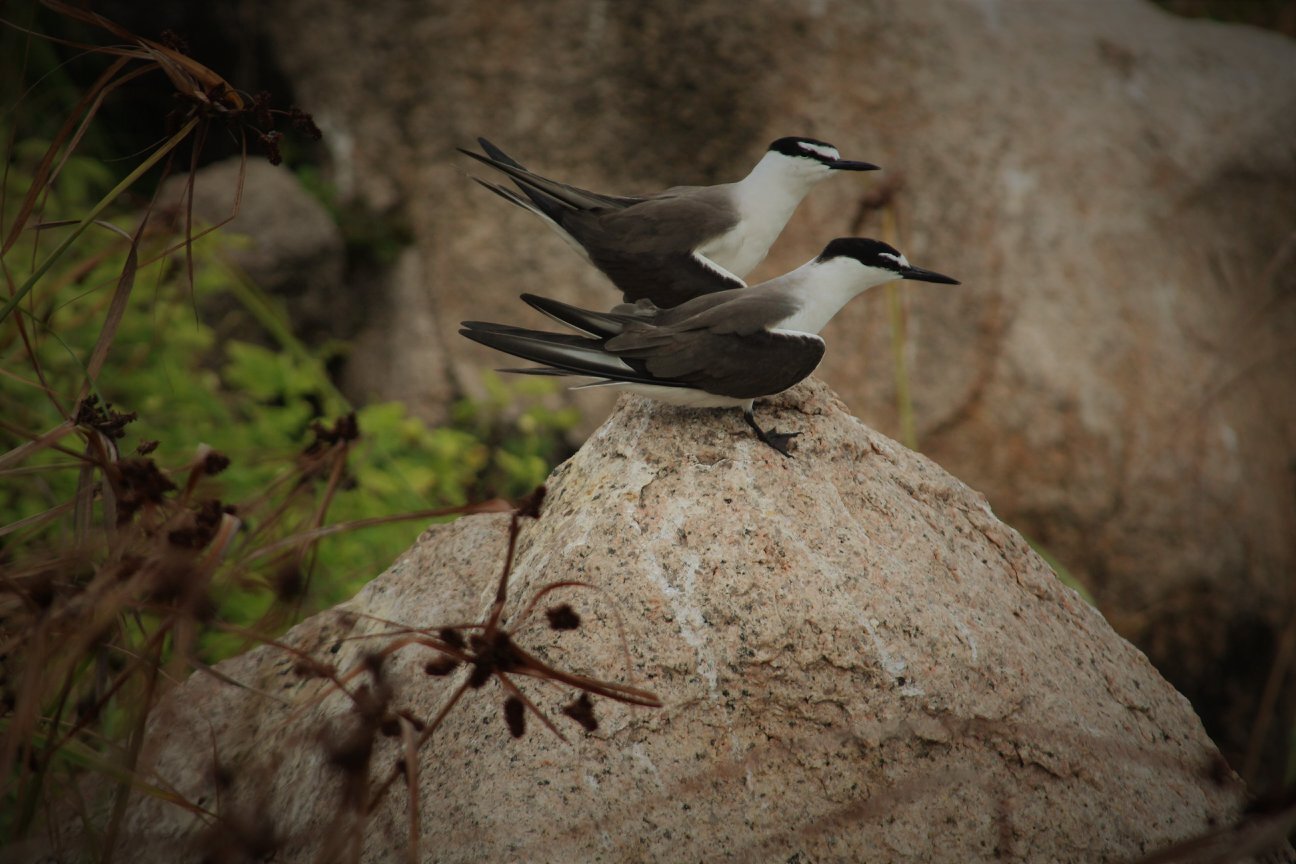La Sterne bridée "insensée" (Onychoprion anaethetus)
La sterne bridée, une espèce d'oiseau marin particulière qui niche sur les rochers de l'île Cousine, suit un cycle de reproduction unique d'environ 8,5 mois. Contrairement aux oiseaux qui se rassemblent en grandes colonies, ces sternes sont généralement solitaires ou se trouvent par paires sur le terrain rocheux exposé de l'île. Leur comportement de nidification consiste à créer des rayures au sol ou à utiliser des trous pour pondre un seul œuf.
Leur nom scientifique"Anaethetus", qui signifie insensé ou stupide, a été attribué aux sternes bridées par les marins. Cela s'explique par la facilité avec laquelle ils pouvaient attraper les oiseaux eux-mêmes et récolter leurs œufs.
Se nourrissant principalement en plongeant, la sterne bridée cible les poissons en milieu marin et fait preuve d'une précision remarquable dans ses plongeons. Contrairement à la sterne arctique, elle opte pour des plongées directes plutôt que pour la technique de l'enjambement. Cette espèce se nourrit également de façon opportuniste de poissons vivant en surface, comme la sterne noire et la sterne à bec bigarré, mais montre une préférence pour la recherche de nourriture près du rivage.
Pendant la parade nuptiale, la sterne bridée mâle montre qu'elle est prête à s'accoupler en offrant du poisson à la femelle, un comportement qui fait partie intégrante de leurs rituels d'accouplement. L'adaptation de cette espèce à la dynamique des poissons prédateurs près du rivage lui permet de tirer profit des poissons qui sont poussés vers la surface par de plus grands prédateurs, réduisant ainsi la nécessité de plonger abondamment.
La rencontre de ces gracieux oiseaux marins sur l'île Cousine offre un aperçu de leurs adaptations écologiques complexes et de leurs habitudes de reproduction. Qu'elles soient observées en solo ou en couple sur le fond accidenté de l'île, les sternes bridées contribuent à la riche diversité aviaire qui fait de l'île Cousine un havre de paix pour les ornithologues et les amateurs de nature.


